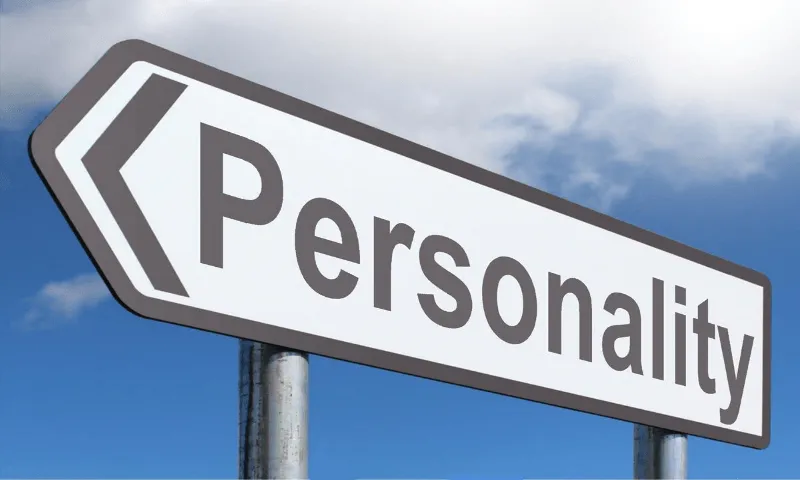
The word personality has its origins in the Latin word ‘persona’, which translates to ‘mask’.
Today we are going to talk about personality types. And, despite the fact that in this post we’ll discuss a model (The Big Five) developed in the second half of the twentieth century, I would like to remind you all that this is a topic Hippocrates was already exploring in 370 BCE. No wonder why they say that “psychology has a long past, but a short history”.
Following that of the Greeks, many other theories of personality were developed across the centuries; the psychodynamic and humanistic models are just a couple of examples among a few. So, a question worth asking is ‘why then discuss this one?’ Well, you see, The Big Five is the model that most personality studies are built upon, and that is because this is the one most widely accepted in academic psychology.
The name Big Five results from the five following dimensions: Neuroticism, Conscientiousness, Openness, Agreeableness and Extroversion, which, as discovered by cross cultural studies conducted by psychologists, describe most people’s character traits.
In case you are wondering why this is important... Well, there are many perspectives from which this query can be addressed. From a psychological standpoint, such studies often explain some of the reasons why people experience the world and relate to others the way they do. For you, it might bring an insight into why you, or indeed those around you, behave in such ways. Moreover, the study of personality is also a reliable predictor of overall health and well-being 1. For example, do you know someone who is constantly anxious, and insecure? There you go! That may even be a result of their high rates in neuroticism.
You can see now how useful it is to have at least a minimum understanding of these dimensions; which, by the way, we all fit into at a higher or a lower level.
The Pros and Cons of Neuroticism

Considering we are already discussing neuroticism, let’s illustrate the example of the previous paragraph a bit further. Think of that friend or relative of yours who is over sensitive, and thinks and worries a lot about past and future events.
You may be surprised to find out that these all are aspects associated to high scores in neuroticism 2. Consequently, instead of getting upset with them for being ‘pessimistic’, or a ‘party pooper’, now you know better. Now, you know that this sort of attitude is likely to be a result of how they perceive, process and react to external and internal information, due to their personality type.
So, what does the future hold for neurotic people in terms of well-being? Well, individuals with high rates in this personality dimension are more susceptible to suffer from mental illnesses (e.g. depression, anxiety disorders) 3. This is, by no means, a piece of information that should bring you down. In fact, it is good practice to use well-founded knowledge in your favour. For example, in this case, if your friend is at the higher end of the neuroticism measure; perhaps, it is time they started an exercise routine, integrate relaxation practices into their daily life, and put their creativity into practice.
Of course! High-scorers in the neuroticism dimension are gifted with creativity and originality 4. Isaac Newton is a classic example of a neurotic genius 5.
Conscientiousness: Industriousness & Orderliness

Now, it’s time to talk about how good you are with following your new years’ resolution, how they look like on a long-term basis, and how careful the decisions you take are made. Are they often last minute, or thoroughly planned? Depending on your answers your general traits regarding dutiful achievements will fall somewhere from extremely low to exceptionally high in the conscientiousness dimension of personality traits. People who rate low in this dimension are more prone to procrastinate, find excuses for not meeting commitments (probably because of lack of organization), and aren’t very future-oriented.
Whilst reading a paper titled Act-frequency signatures of the big five 6 I laughed as I read that people with low-levels of conscientiousness buy and read more books. That was because it reminded me of an old acquaintance of mine, Jane.
She lived with a family member she looked after. I used to visit them at least once a month, and I was always surprised with how chaotic their place was. It wasn’t dirty, it was just full of recently delivered Amazon goods, things Jane was planning to either sell or donate all piled up in the corner, and so on. She was always, always reading a new book, which she started without finishing the previous one. Jane is also incredibly spontaneous and fully lives the present moment. Although, such extreme personality traits have caused her to be unprepared for various situations that she should have been ready for, particularly financially. If I had to make an educated guess, I would say she rates rather low in conscientiousness. 😊
Therefore, it will be only natural if you assume that someone at the opposite end of the conscientiousness dimension lives pretty much a perfect life. Well, being the opposite of Jane definitely has its advantages. Being able to plan for the future is a good example. However, like everything else, nothing is good in extreme. The line separating extremely conscientiousness and perfectionism as well as obsessions is an easy one to cross.
That is something which may lead extremely conscientious people to feelings of constant discontentment and, occasionally, shame. 7. At average/typical levels though, this personality dimension is associated with successful outcomes in the social, educational and professional spheres.
Where do you think you fit within this dimension? Low, average or high?
Openness to Experience

Research has demonstrated that personality is the outcome of an interplay among inherited tendencies, socioeconomic status, parenting style and culture.
There are two aspects that comprise this trait: Intellect (not to be confused with IQ) and imagination/openness. The former is related to one’s level of interest in abstract concepts, curiosity and keenness to learn new things. The latter is all about creativity. Overall this personality dimension measures artistic interests that range from sensitivity to beauty, from music to literature, and so forth.
Among us, here on Steemit, there is no better person to illustrate this trait than @ruth-girl. I personally know quite a few people (men and women), who exhibit the traits of those with high intellect, as they display verbal intelligence, musical and literary talents. Nevertheless, they have remained within those boundaries throughout their entire lives without ever venturing other horizons. This, presumably, indicates rather moderately low levels of openness.
@ruth-girl, on the other hand, not only is keen to explore different worlds, but is also talented at them. She gracefully switches from science to photography to short stories, and oftentimes, integrates all her talents in one post through her scientific photo stories. Someone at the opposite end of the scale from Ruth is generally quite conventional, rarely daydreams, and doesn’t really feel the need of an outlet for their creative capacities.
As well as previous reports, Weisberg et. al’s study 8 found that there is significant gender differences in the Intellect and Openness aspects of the Big Five traits; with men scoring higher than women in intellect, and women higher than men in openness. Again, this is not to be assumed men have higher IQ levels than women. But, it might indicate why these two genders, in general, have different preferences when it comes to, for example, art and maths.
Agreeableness: Politeness & Compassion

I am particularly interested in this personality trait, which I see as a quite complex one. See, this is the primary dimension of interpersonal interaction; meaning that it relates to the processes through which we communicate with others (whether verbally or not).
Like all the other personality dimensions, its extremes come with its ups and downs. For example, high scorers on agreeableness can be generally described as being nice, they trust others with ease, they are kind and, hence, very appeasing. These people will run a mile to avoid conflict. Who wouldn’t like to hang out with such a person? I most certainly would. But, there is something about them you ought to know. Highly agreeable individuals tend to dissemble their true feelings and thoughts. Not out of deceit. But rather because they try at all costs to avoid confrontation 9. My brother is a bit like this.
The precise opposite of that describes low scorers, who are mostly characterized by their competitiveness, stubbornness and skepticism. They sound a bit of a nightmare, right? However, before you judge them too hard, there is one interesting thing to find out about them: They are not shy of bluntly voicing their views. There is no second guessing with moderately low scorers on agreeableness 10.
As for those of you whose position in this dimension is typical/average. Well, as much as being more than happy to cooperate with others, whenever you feel something is not quite as you wish, you stand your ground. Conflict is not something you are necessarily intimidated by. Further, you don’t harbour resentment (especially if you rate low in neuroticism); but, this does not set you free from experiencing the occasional frustration.
Oh! Did you know that, overall, women are more agreeable than men 11 ?
Extroversion : A Predictor of Well-Being

I could never have imagined, for instance, how terrible and agonising it would be never once for a single minute to be alone for the ten years of my imprisonment
Dostoyevski – The House of the dead
I feel this is the personality dimension most widely known. As it permeates our day-to-day vocabulary we can all picture with precision an extrovert person: energetic, assertive, and talkative. Everyone knows someone like that. For me the most interesting characteristic of extroverts is that they actually crave being among others.
Consequently, they are pretty proactive about it, and get on with organizing social gatherings, joining communities etc. And since social interaction is associated with higher levels of subjective well-being 12, extroverts tend to enjoy a lot of positive emotions in life; which, in turn makes them less likely to suffer from major depressive disorders 13. Admittedly, when that fine line is crossed, they can become a bit pushy (we all know someone like that too!). However, this is something that might mostly affect others, rather than the extroverts themselves. So they just carry on having a good time!
At the other end of this dimension, you will find the more reserved people, the introverts, who enjoy their privacy and own company very much. And, just in case you think the life of an introvert is a life of emotional struggle, please beware that these are the individuals (when compared to extroverts) who make the most out of their time alone, as they don’t see it as something unsettling. Further, they are less prone to suffer from boredom than extroverts 14. I also feel these are often misunderstood individuals; who instead of being perceived as reflective, are called ‘aloof’; or rather than being considered private, are often labelled ‘unfriendly’.
Nevertheless, this is the sort of misinterpretation that can be avoided if we have at least a minimum understanding of the overall consistent ways people think, feel and react to the world throughout their lives. As these are elements of who we are that are also motivated by our personality types.
So, are you ready to find out your personality type?
Go ahead and have some fun taking the IPIP Big-Five Factor Markers, which is not really a test, but rather a sequence of 50 statements with the options : disagree, neutral, agree.
It should not take more than 5 minutes :)
Then, you can come back and let me know how accurate it was in describing you. Or, you can just share with me the aspect of your personality you are proud of and the one would you like to improve.

Reference List:
1 Does personality predict health and well-being? A metasynthesis..
2,3,4 Thinking too much: self-generated thought as the engine of neuroticism.
5 Creative and neurotic: Is neuroticism fueled by overthinking?
6 Act-frequency signatures of the Big Five
7 The Dark Side of Conscientiousness
8,11 Gender Differences in Personality across the Ten Aspects of the Big Five
9,10 An Alternative "Description of Personality": The Big-Five Factor Structure
12 The Architecture of Sustainable Happiness
13 Extraversion
14 The Upside of Being an Introvert


Dear Reader,
I hope you have enjoyed this post. I would like to thank you for taking the time to read it. Also, I would like to remind you that due to my current busy schedule I will be posting every other Friday for a while.
I am looking forward to reading your comments which I will be replying to slowly, but surely over the next few days. 😊
Much love to you all 🎔